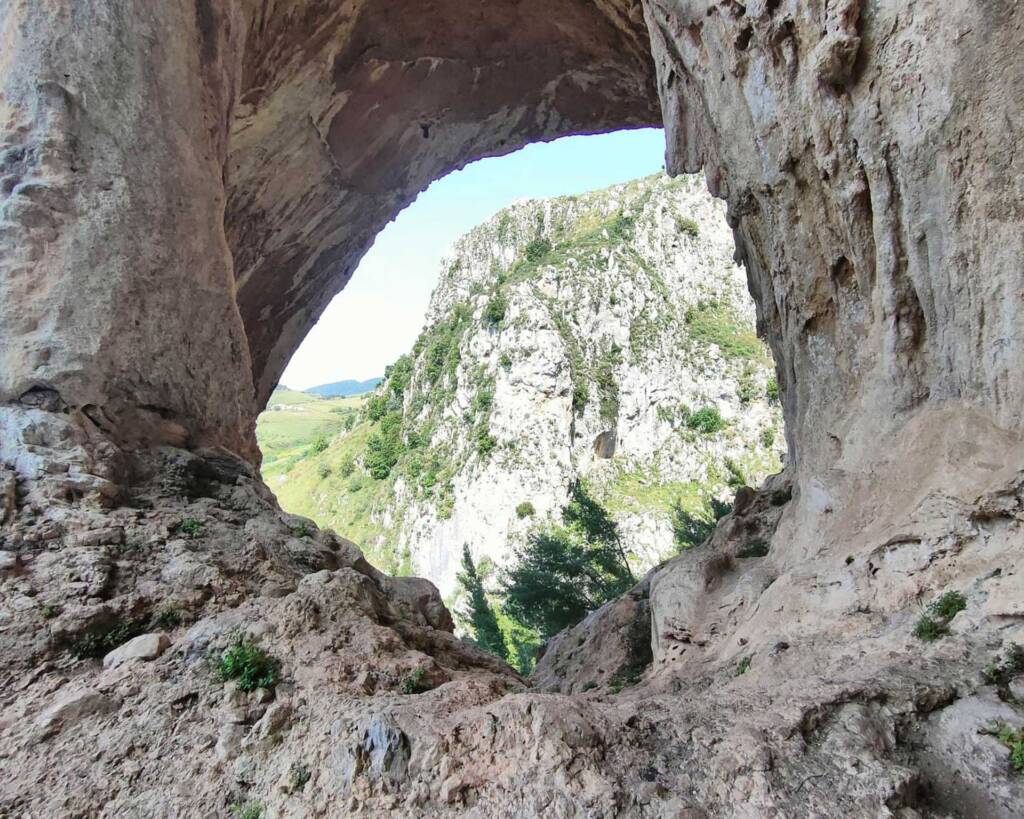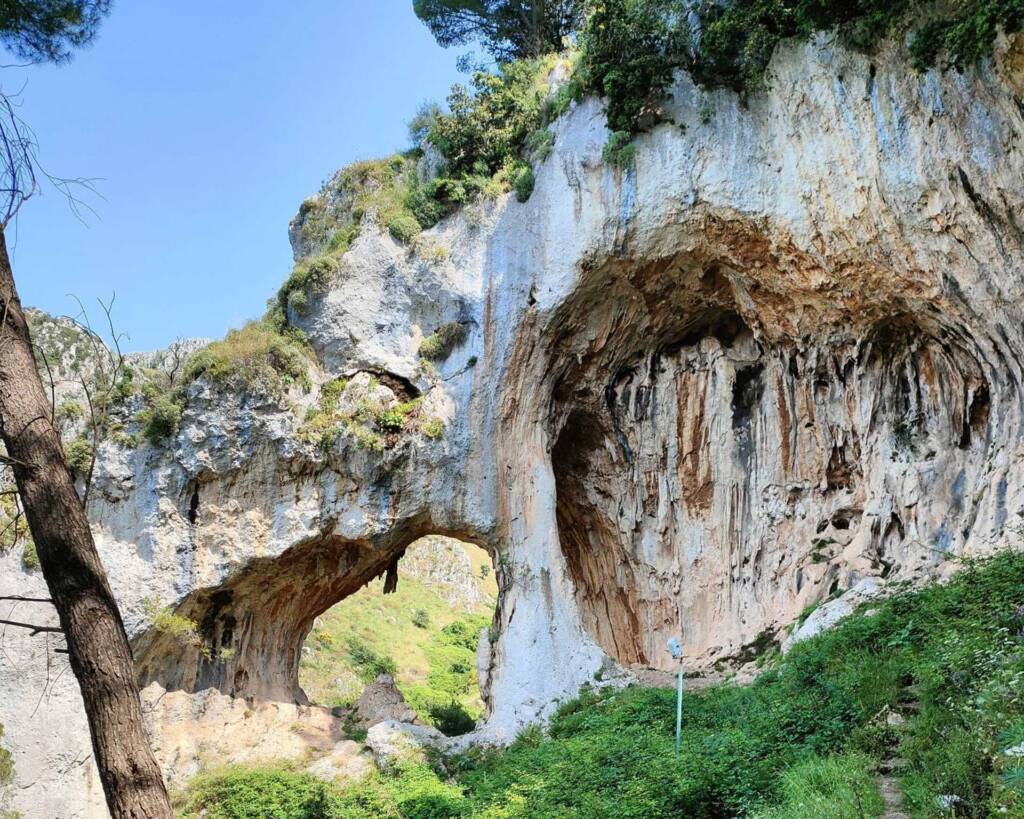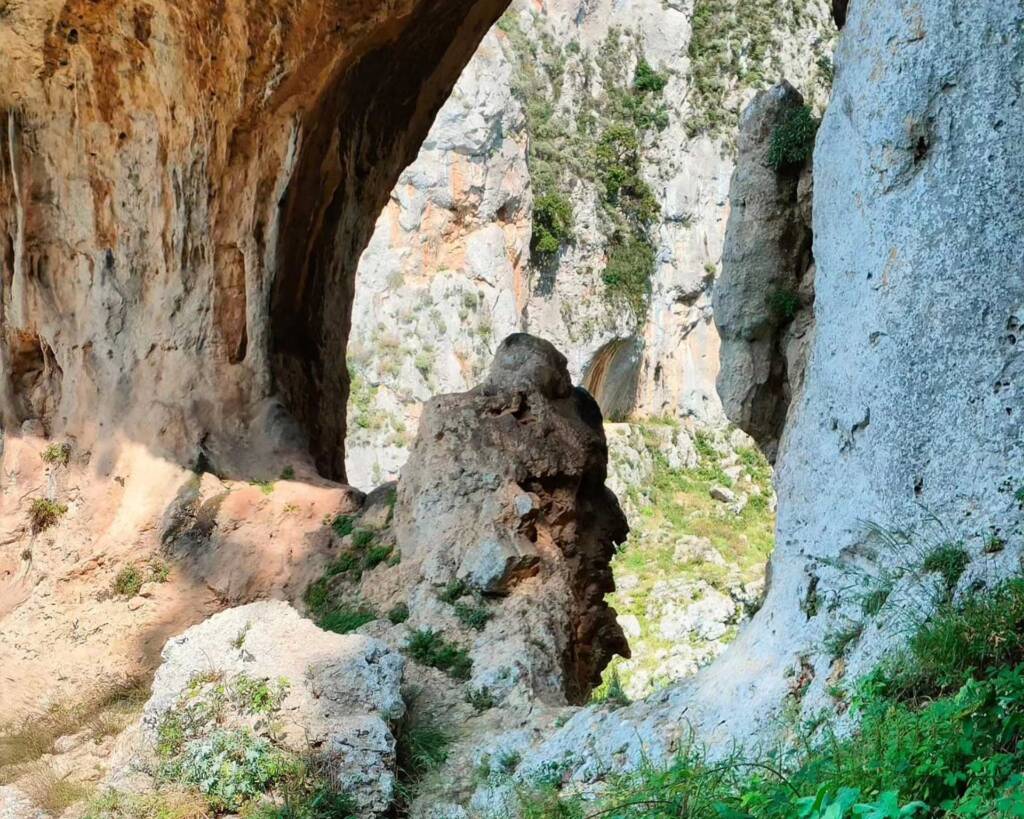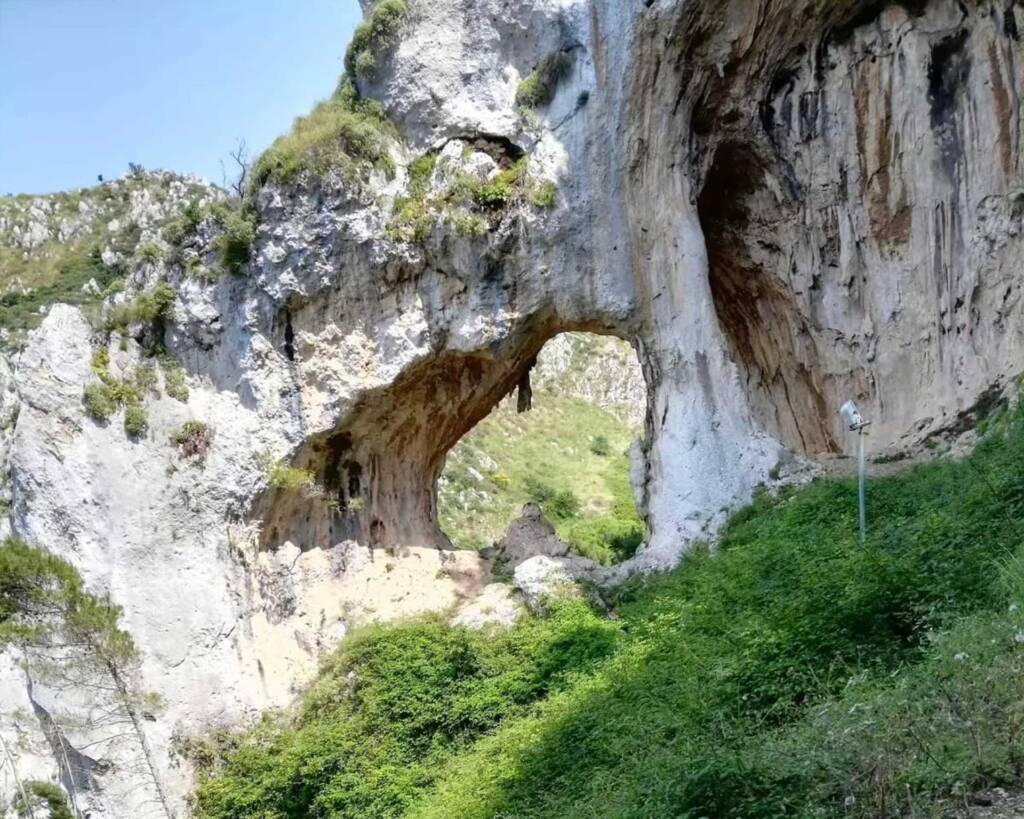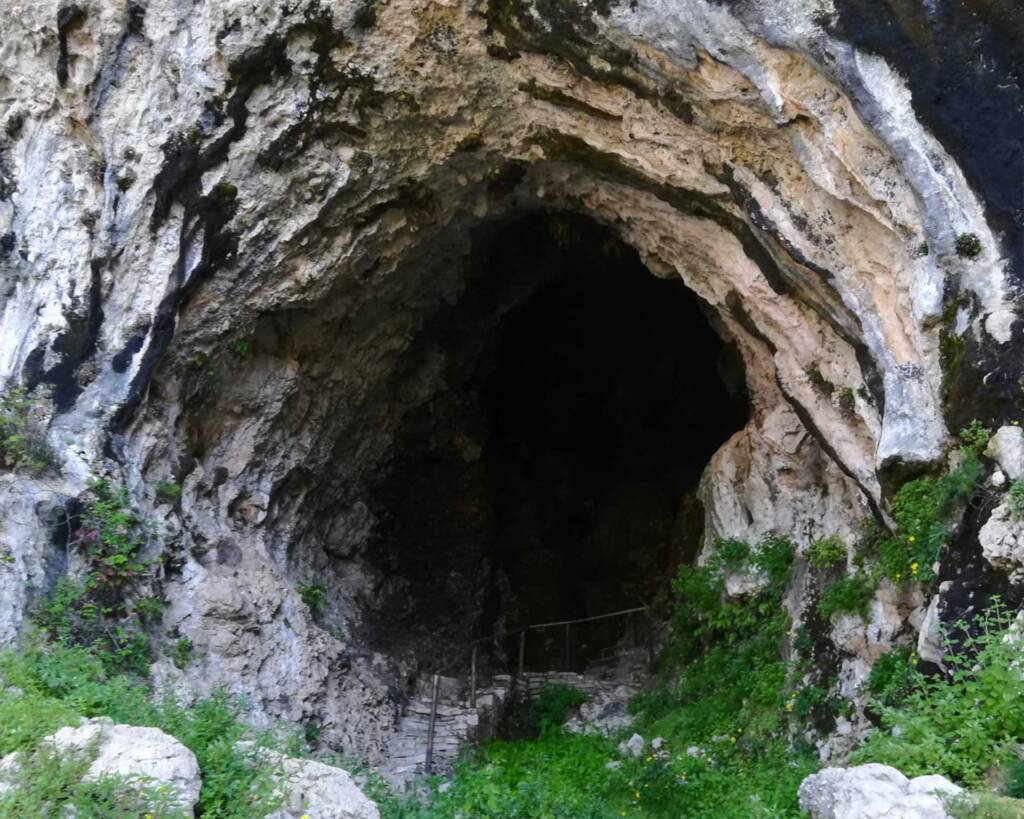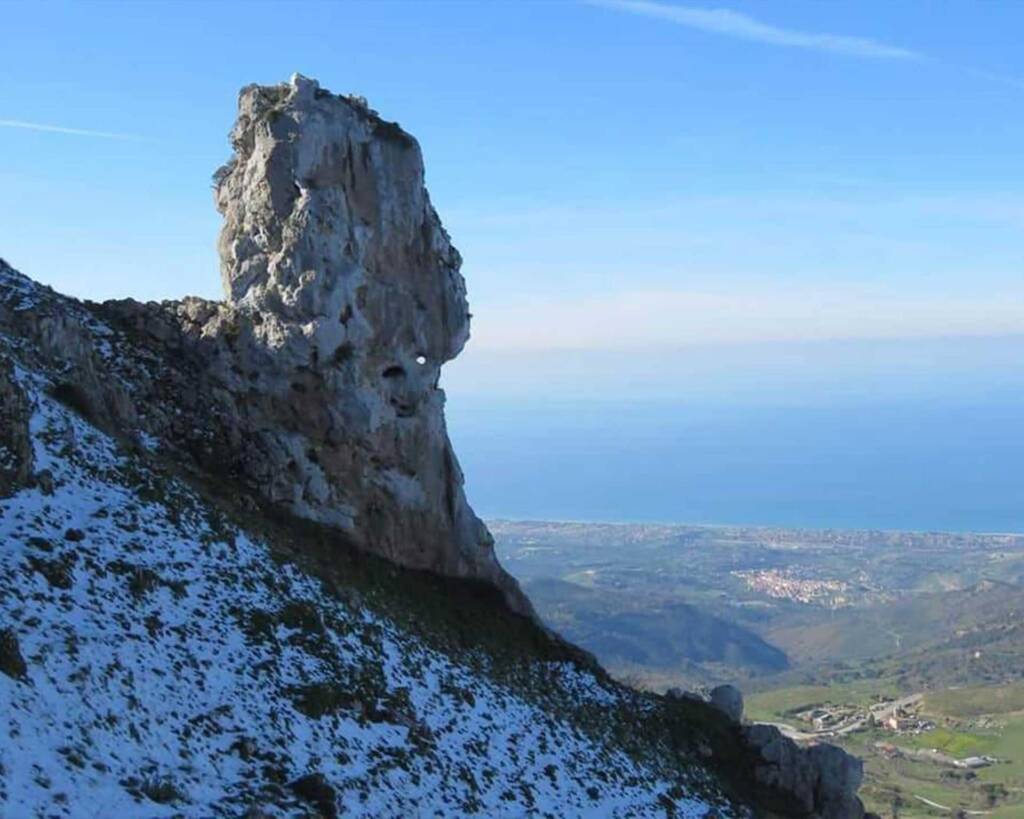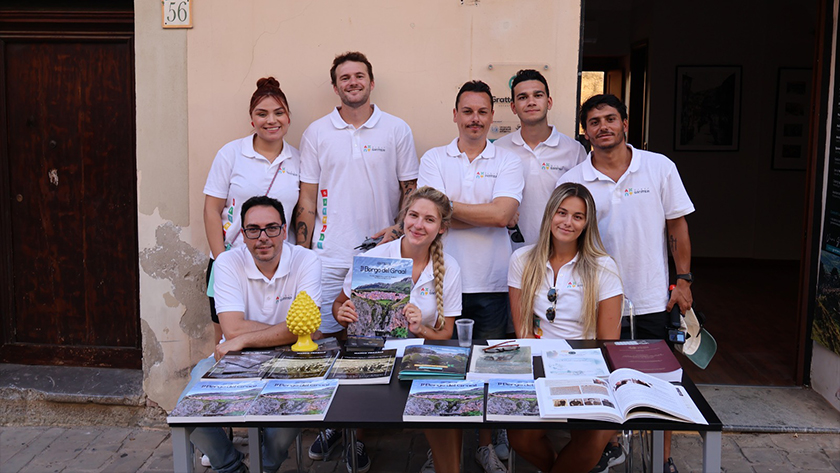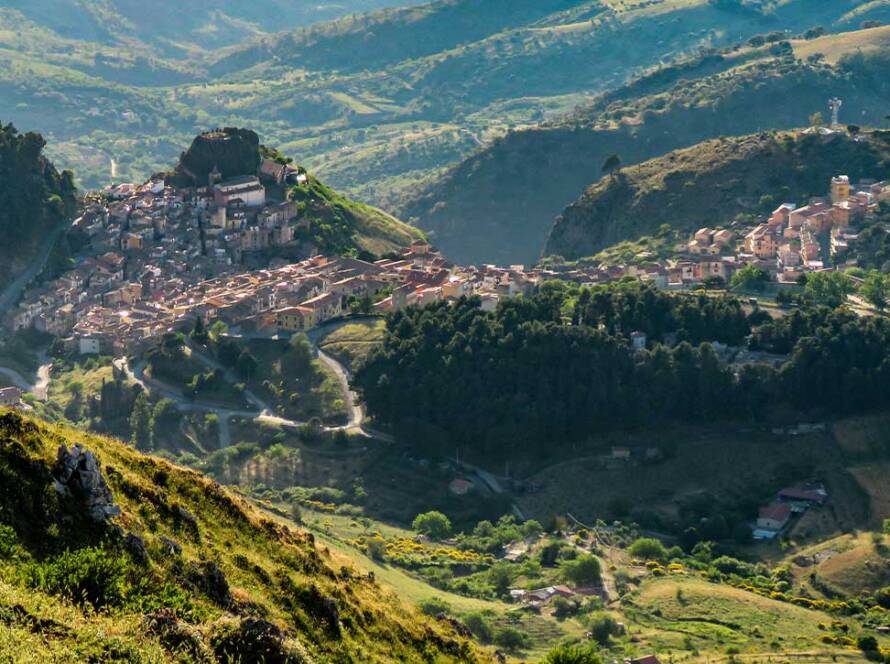Gratteri, a new megalithic site discovered
A new megalithic site around the Grotta Grattara of Gratteri that up to these days was completely unknown. Structures used by prehistoric people as indicators of solstitial dawns and sunsets, that seem to belong to the prehistoric period of the late Bronze Age.
Making this significative discovery a graduate assistant from the University of Palermo, Marco Fragale, who attends to a thesis about Gratteri within a Sicilian toponymy project (DATOS) of the Department of Sicilian Philological and Linguistic Sciences led by Professor Giovanni Ruffino.
The scholar, after the discovery of an ancient photo of the rock in the house of a local expert and the enlightening reading of the book ‘The Civilisation of the Sun in Sicily’ (Maurici, Polcaro, Scuderi, Kalós Edizioni, 2019) pointed out the drilled rocks to his supervisor, Prof. Marina Castiglione, and subsequently contacted the authors of the book on 13 June 2023.
The first pierced rock, located at the entrance to the village above the current Ganci Battaglia belvedere, was popularly called ‘Pietra Ruossa’ (Big Stone). Beneath the megalithic monument is a complex of caves called ‘I Rutti Brianti’ (Briganti Caves) by the locals.
From recent measurements, the pierce of the rock seems to be perfectly aligned with the solstitial dawn and sunset (240/60). Furthermore, a closet full of bronze objects was found in 1920 near the site, which is today guarded by the Museum Salinas of Palermo.
This closet comprehended eleven pieces of bronze: eight flat axes with a trapezoidal outline of different lengths (total weight Kg. 2.683); two eye-shaped ones with a curved feather in the handle part (gr. 946 and kg. 1.44) and a ring with tapered ends and juxtaposed with each other (gr. 117, diam. mm. 69), belonging to the transition period from the Bronze Age to the Early Iron Age in Mainland Italy, which corresponds to the end of the second Sicilian period and the beginning of the third (Atti della Reale Accademia di Scienze, Lettere e Belle Arti di Palermo – Terza serie, years 1923-24-25, Vol. XIII, Palermo Scuola Tip. “Boccone del Povero” 1926).
The closets discovered in Lipari (Messina), Cannatello (Agrigento), Biancavilla (Catania) and Malvagna (Messina) also belong to this group, which cover a chronological arch classified with the cultural phase of Cassibile, dated 1000-850 b.C. (Ibidem).
However, the axes found in Gratteri display particularly archaic features, such as the eye that is barely or not distinct from the blade and the sharp edge in the upper face of the blade, foreign to the later styles, but typical of very characteristic peninsular types, such as the ribbed eye axes with crested heel and those of the Menaforno and Cuma type (Ibid.).
On its significance, therefore, archaeologists believe that the objects within the closets, as well as serving for the needs of daily life, were also valid as primitive metallic money, circulating for commercial exchanges, something similar to “what would later be, when coinage began to be minted, the monetary storage materials” (L. Bernabò Brea, La Sicilia prima dei Greci, Milan 1972, p. 185).
As Sebastiano Tusa reported, the site was probably used as a centre of commercial exchange between the mountain settlements and the bordering areas (S. Tusa, L’archeologia, in Il parco delle Madonie, Palermo 1989, p. 178).
Marco Fragale has also brought to the attention of scholars two other ocular openings adjacent to Grotta Grattara until now considered to be karst wall collapses, but which today, in the light of new measurements, would appear to be aligned towards solstitial points: 120/300 (sunrise and sunset winter solstice) and 60/240 (sunrise summer solstice and sunset winter solstice).
Under the imposing orbits there is also an anthropomorphic rock that would appear to be the outline of a man’s head.
Another anthropomorphic rock called ‘A Tiesta’ was found on a rocky crust located between Grotta Grattara and Pietra Grossa that seems to form a semicircle of a probable ritual path of a very ancient place of worship, whose sacredness could be correlated with the ‘genius loci’.
The scholar, who has been involved in archival and ethnolinguistic research on Gratteri for years, relates it to a fountain located today in the town’s main square called ‘A Ninfa’, which in terms of similarity and meaning echoes the one of Grotta Grattara. In the past, it was surmounted by a nymph that poured water from her breasts, which would echo the Genius Loci of Gratteri, the nymph of a spring, that of Grotta Grattara.
Another interesting aspect reported by the scholar is the name of a district behind the pierced stone that was popularly called ‘A banna o suli’ (beyond the sun), currently Via del Sole.
According to Fragale: ‘This huge cave, Grotta Grattara, with its natural spring generated by the trickling of karstic rocks, could not have gone unnoticed by prehistoric peoples, who worshipped the Mother Goddess and the Nymphs, the guardian spirits of the springs, as shown by a series of anthropological studies conducted by various scholars on places considered sacred by the peoples of prehistoric Sicily. Probably the legend of the Old Woman residing in the Cave may have been grafted onto an even more ancient myth, that of a Sibyl and an oracular cave, a theory to which Don Carlo Ventimiglia, Baron of Gratteri, seems to have alluded as far back as the 17th century, as I have ascertained in some of his manuscripts found in the Palermo archives’.
An on-site survey will be conducted by Professor Ferdinando Maurici’s team over the next few days.
Source: www.esperonews.it


